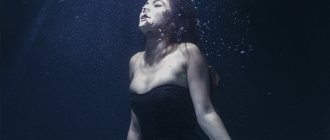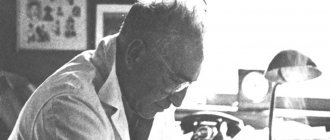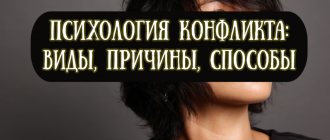Hello, my friend, you are interested in learning everything about creativity, then read to the end with inspiration. In order to better understand what creativity is and theories of creativity, I strongly recommend reading everything from the category Psychology of Creativity and Genius
creativity is a process of activity as a result of which qualitatively new objects and spiritual values are created or the result of the creation of an objectively new one. The main criterion that distinguishes creativity from manufacturing (production) is the uniqueness of its result. The result of creativity cannot be directly derived from the initial conditions. No one, except perhaps the author, can get exactly the same result if the same initial situation is created for him. Thus, in the creative process, the author invests in the material, in addition to labor, certain possibilities that are not reducible to labor operations or logical conclusion, and expresses in the final result some aspects of his personality. It is this fact that gives creative products additional value in comparison with manufactured products. In creativity, not only the result is valuable, but also the process itself.
An illustration of the irreducibility of the process and result of creativity to a logical conclusion from known provisions can be the words of Niels Bohr: “This theory is not crazy enough to be true.”
Creativity is a mental process of free realization of thoughts...
...in the external world, including with the help of tools and a person’s internal sensations, of interest to him or others and of aesthetic value.
A necessary element of human creative activity, expressed in constructing an image of the products of labor, and also ensuring the creation of a program of behavior in cases where the problem situation is characterized by uncertainty, is imagination.
Knowledge, skills and abilities belong to the area of the subconscious, that is, to psychological automatism, and are not decisive in the creative process. To be creative, you need to have basic knowledge, which is the general basis for mastering the instrument, as well as the necessary minimum knowledge sufficient to complete this creative process. But to accomplish it there is no need to have “encyclopedic” knowledge: as a rule, mastering such knowledge occurs, to a certain extent, due to the liberation of the mind (logic) from intuition; often this is the “copying” mind, which usually follows someone else's logic. At the same time, due to the loss of connection between the mind and intuition, the implementation of the creative process one way or another becomes impossible. A free mind (or logic), for example, is fast, sophisticated, resourceful, inventive and daring. Therefore, you can have infinitely great knowledge, but not be able to create anything new if intuition does not work. On the other hand, you can have highly developed intuition, but still not be able to create something new, if there is no knowledge or tool with the help of which you need to realize intuitively perceived images, formalize them in the language of logic and make them accessible to other people. People also say: “I know and am aware.” Vedat means “to manage, to manage knowledge.” It is important to understand that a person who only knows, but does not know, will not be able to create something new. Creativity requires a harmonious combination of knowledge and skill, as well as logic and intuition.
The branch of knowledge that studies creativity is heuristics. Valuable creativity Spring creativity
Psychology of creativity: the essence of science, the subject of study
Psychologists study the products of human activity created in the fields of science, technology, and art. In addition to the products themselves, psychologists are also interested in the components of the creation process: the role of thinking, imagination, intuition, and individual personality traits.
Within the framework of psychology, the personalities of great creators are examined: they study the biography, background, and role of giftedness. According to psychologists, all people have creative abilities and they can be developed. But it is important to distinguish giftedness from genius - the highest form of manifestation of creative activity. Genius is considered a rare innate quality, which is why there are few geniuses.
Development of creative abilities (page 1 of 6)
INTRODUCTION
Creativity refers to the activity of creating new and original products of social significance.
The essence of creativity is predicting the result of correctly setting up an experiment, creating, through the effort of thought, a working hypothesis close to reality, in what Sklodowska called a sense of nature.
Interest in creativity, the personality of the creator in the 20th century. connected, perhaps, with the global crisis, the manifestation of man’s total alienation from the world, the feeling that through purposeful activity people are not solving the problem of man’s place in the world, but are pushing its solution even further away.
The relevance of the topic is determined by the fact that many researchers reduce the problem of human abilities to the problem of a creative personality: there are no special creative abilities, but there is a person with certain motivation and traits. Indeed, if intellectual talent does not directly affect a person’s creative success, if during the development of creativity the formation of certain motivation and personality traits precedes creative manifestations, then we can conclude that there is a special type of personality - the “Creative Person.”
Creativity is going beyond the given limits (Pasternak’s “above barriers”). This is only a negative definition of creativity, but the first thing that catches your eye is the similarity between the behavior of a creative person and a person with mental disorders. The behavior of both deviates from the stereotypical, generally accepted one.
People do a lot of things every day: small and large, simple and complex. And every task is a task, sometimes more or less difficult.
When solving problems, an act of creativity occurs, a new path is found, or something new is created. This is where special qualities of the mind are required, such as observation, the ability to compare and analyze, to find connections and dependencies - all that together constitutes creative abilities.
The acceleration of scientific and technological progress will depend on the quantity and quality of creatively developed minds, on their ability to ensure the rapid development of science, technology and production, on what is now called the increase in the intellectual potential of the people.
The purpose of this course work is to consider aspects of the development of creative abilities.
Based on the goal, the following tasks can be set:
— characterize creativity as a mental process;
- consider the essence of a creative personality and her life path;
- study the development of creative abilities;
— consider the basic concepts of creativity.
1. ESSENCE AND IMPORTANCE OF CREATIVITY DEVELOPMENT
1.1 Creativity as a mental process
Most philosophers and psychologists distinguish between two main types of behavior: adaptive (related to the resources available to a person) and creative, defined as “creative destruction.” In the creative process, a person creates a new reality that can be comprehended and used by other people.
Attitudes towards creativity have changed dramatically in different eras. In Ancient Rome, only the material and the work of the bookbinder were valued in a book, and the author had no rights—neither plagiarism nor forgeries were prosecuted. In the Middle Ages and much later, the creator was equated with a craftsman, and if he dared to show creative independence, then it was not encouraged in any way. The creator had to earn a living in a different way: Moliere was a court upholsterer, and the great Lomonosov was valued for his utilitarian products - court odes and the creation of festive fireworks.
And only in the 19th century. artists, writers, scientists and other representatives of creative professions were given the opportunity to live from the sale of their creative product. As A. S. Pushkin wrote, “inspiration is not for sale, but you can sell a manuscript.” At the same time, the manuscript was valued only as a matrix for replication, for the production of a mass product.
In the 20th century the real value of any creative product was also determined not by its contribution to the treasury of world culture, but by the extent to which it can serve as material for replication (in reproductions, television films, radio broadcasts, etc.). Therefore, there are differences in income that are unpleasant for intellectuals, on the one hand, between representatives of the performing arts (ballet, musical performance, etc.), as well as dealers in mass culture and, on the other hand, creators.
Society, however, has at all times divided two spheres of human activity: otium and oficium (negotium), respectively, leisure activity and socially regulated activity. Moreover, the social significance of these areas has changed over time. In Ancient Athens, biostheoretikos - theoretical life - was considered more “prestigious” and acceptable for a free citizen than biospraktikos - practical life.
Interest in creativity, the personality of the creator in the 20th century. connected, perhaps, with the global crisis, the manifestation of man’s total alienation from the world, the feeling that through purposeful activity people are not solving the problem of man’s place in the world, but are pushing its solution even further away.
The main thing in creativity is not external activity, but internal activity - the act of creating an “ideal”, an image of the world, where the problem of alienation of man and environment is resolved. External activity is only an explication of the products of an internal act. The peculiarities of the creative process as a mental (spiritual) act will be the subject of further presentation and analysis.
Highlighting the signs of a creative act, almost all researchers emphasized its unconsciousness, spontaneity, the impossibility of its control by the will and mind, as well as a change in the state of consciousness.
The most common are “divine” and “demonic” versions of attribution of the cause of creativity. Moreover, artists and writers accepted these versions depending on their worldview. If Byron believed that a “demon” possessed a person, then Michelangelo believed that God was guiding his hand: “A good picture approaches God and merges with him.”
The consequence of this is the tendency, observed among many authors, to renounce authorship. Since it was not I who wrote, but God, the devil, the spirit, the “inner voice,” the creator recognizes himself as an instrument of an outside force.
It is noteworthy that the version of the non-personal source of the creative act passes through spaces, eras and cultures. And in our time it is being revived in the thoughts of the great Joseph Brodsky: “The poet, I repeat, is the means of existence of language. The person writing the poem, however, does not write it because he expects posthumous fame, although he often hopes that the poem will outlive him, even if only for a short time. A person writing a poem writes it because his tongue tells him or simply dictates the next line.
When starting a poem, the poet, as a rule, does not know how it will end, and sometimes he is very surprised by what happens, because it often turns out better than he expected, often the thought goes further than he expected. This is the moment when the future of language interferes with the present... The writer of a poem writes it, first of all, because versification is a colossal accelerator of consciousness, thinking, and worldview. Having experienced this acceleration once, a person is no longer able to refuse to repeat this experience; he becomes dependent on this process, just as he becomes dependent on drugs and alcohol. A person who is in such a dependence on language, I believe, is called a poet.”
In this state, there is no sense of personal initiative and no sense of personal merit in creating a creative product; it is as if an alien spirit is invading the person, or thoughts, images, and feelings are being instilled into him from the outside. This experience leads to an unexpected effect: the creator begins to treat his creations with indifference or, moreover, with disgust. A so-called post-creative saturation occurs. The author is alienated from his work. When performing purposeful activities, including labor, there is an opposite effect, namely, the “effect of invested activity.” The more effort a person spends on achieving a goal, producing a product, the greater the emotional significance this product acquires for him.
Since the activity of the unconscious in the creative process is associated with a special state of consciousness, the creative act is sometimes performed in a dream, in a state of intoxication and under anesthesia. In order to reproduce this state by external means, many resorted to artificial stimulation. When R. Rolland wrote Cola Breugnon, he drank wine; Schiller kept his feet in cold water; Byron took laudanum; Rousseau stood in the sun with his head uncovered; Milton and Pushkin loved to write while lying on a sofa or couch. Balzac, Bach, Schiller were coffee lovers; drug addicts - Edgar Allan Poe, John Lennon and Jim Morrison.
Spontaneity, suddenness, independence of the creative act from external causes is its second main feature. The need for creativity arises even when it is undesirable. At the same time, the author’s activity eliminates any possibility of logical thought and the ability to perceive the environment. Many authors mistake their images for reality. The creative act is accompanied by excitement and nervous tension. All that remains for the mind is processing, giving a completed socially acceptable form to the products of creativity, discarding the superfluous and detailing[1].
So, the spontaneity of the creative act, the passivity of the will and the altered state of consciousness at the moment of inspiration, the activity of the unconscious, speak of a special relationship between consciousness and the unconscious. Consciousness (the conscious subject) is passive and only perceives the creative product. The unconscious (unconscious creative subject) actively generates a creative product and presents it to consciousness.
In Russian psychology, the most holistic concept of creativity as a mental process was proposed by Ya. A. Ponomarev (1988). He developed a structural-level model of the central link of the psychological mechanism of creativity. Studying the mental development of children and problem solving by adults, Ponomarev came to the conclusion that the results of the experiments give the right to schematically depict the central link of psychological intelligence in the form of two spheres penetrating one another. The external boundaries of these spheres can be represented as abstract limits (asymptotes) of thinking. From below, this limit will be intuitive thinking (beyond it extends the sphere of strictly intuitive thinking of animals). At the top is the logical (behind it extends the sphere of strictly logical thinking of computers).
History of the development of the industry: the formation of science, role in society
As a science, the psychology of art was formed at the beginning of the 20th century. It had not yet been defined as a separate field, since it considered only one area: biography, literary works. By analyzing the material, scientists studied the nature of the creation process and personality traits.
With the beginning of the development of experimental psychology, research methods have changed. Psychologists began to work not only with heritage, but also with contemporary authors. They used questionnaires, experimental methods, and interviews.
The scientific and technological revolution influenced the quality of the study of art and posed new challenges for psychologists. The need for employees who are able not only to complete a task, but also to offer creative ideas, take on more responsibility, and make independent decisions has increased. In this regard, a new direction has emerged that studies creativity as a component of science and technology.
See also
- the meaning of creativity,
- creativity is a central element of human existence,
- types of creativity,
- need for creativity,
- assisted creativity, use of assistive systems for creativity,
- development of children's creativity, stages of development of visual creativity,
- creativity as a phenomenon,
- Imagination
- A game
- Invention
- Innovation
- Art
- Creativity
- Thinking (psychology)
- Flow (psychology)
- Psychology of creativity
- Craft
- Sublimation (psychology)
Do you like creativity? or do you have any useful tips and additions? Write to other readers below. I hope that now you understand what creativity is, the theories of creativity and why all this is needed, and if you don’t understand, or if you have any comments, then don’t hesitate to write or ask in the comments, I will be happy to answer. In order to gain a deeper understanding, I strongly recommend studying all the information from the category Psychology of Creativity and Genius
The role of creativity in antiquity, the opinion of philosophers
Antiquity is the first period in human history marked by the accelerated development of science. Considering various manifestations of the surrounding world, philosophers have identified creativity as a separate sphere. They divided it into human and divine. Human manifestation included arts and crafts. The phenomenon of the creation of the cosmos was considered a divine manifestation.
Aristotle denied God's intervention in the creative process, calling it an act of activity - the creation of something new. Plato viewed creation as a process of contemplation—the new is born from observation.
And
In addition, there are lesser-known approaches to activating and developing creativity:
- Focal object method by Charles Whiting. This method is aimed at finding new ideas by attaching properties or characteristics of other objects to the initial object. It is used in invention when searching for new modifications of existing objects.
- Fritz Zwicky's morphological analysis is based on the selection of possible solutions for individual parts of the problem (the so-called morphological features characterizing the device) and the subsequent systematic receipt of their combinations. In other words, this method consists in dividing the object under study into elements, from which elements with the desired characteristics are selected. And a new element is assembled only with the selected characteristics.
- The Bus, Bed, Bath method. It is based on the belief that new ideas often come to us at the most unexpected moments and in the most unexpected environments. You just need to release them and not interfere with their appearance.
- Idea trap (or personal brainstorming). This method suggests writing down absolutely every idea that comes to your mind. The process can be carried out for a whole week, after which it is necessary to analyze the ideas received and try to choose the most suitable option.
Theories of creativity: different approaches, concepts of perception
The phenomenon of creativity was examined by psychologists from different schools. Among them are:
- Depth psychology. Freud considered two aspects: unconscious components and motivation. Creativity is the sublimation of sexual energy, which an individual realizes in a socially acceptable manner. Jung viewed it as the result of the influence of archetypes - manifestations of collective images. Creativity for analytical psychology is a means of expressing deep experiences, unity with the collective unconscious.
- Gestalt psychology. Gestalt psychology is characterized by considering art as a product of the thinking of a developed personality.
- Cognitive theory. According to cognitive scientists, creativity is the essence of the life process. Each individual uses accumulated experience throughout his life to create his own worldview model.
- Humanistic theory. For humanists, creativity is an act of self-expression. The ability to create distinguishes a meaningful personality from animals and is innate.
- Development of a creative personality. Altushler viewed the creation process as a consequence of self-improvement. To develop creative abilities, a person needs not only innate data, but also suitable conditions.
Modern science combines different approaches, studying the process of art development comprehensively.
Collective creativity
Theories that describe the principles and features of collective creativity can be included in a separate group:
Brainstorm. The author of this method is Alex Osborne. A group of people actively proposes various ideas, group members try to develop them, immediately analyze them, identifying disadvantages and advantages.
Delphi method (Delphi method). The method consists in identifying the expert opinion of specialists under conditions of anonymity, followed by processing the results obtained using statistical methods.
William Gordon's synectics consists of uniting individual creators into a single group to jointly formulate and solve specific problems. The purpose of developing the method is to increase the likelihood of success when setting and solving problems. The method includes practical approaches to conscious decisions and the use of unconscious mechanisms that manifest themselves in a person at the moment of creative activity.
Whatever approach or theory of creativity you choose, remember that creativity is strongly related to your inner desire to create, as well as a well-rounded education. Therefore, read more interesting books, watch good films, go to exhibitions and galleries, and most importantly, analyze and comprehend new knowledge.
Ponomarev's concept: nature, features of the creative process
Ya. Ponomarev considered the process of creating art as the result of life experience. He distinguished between logical and intuitive experience:
- The part of experience responsible for creativity is in the hidden part of consciousness; in order to gain access to it, you need to choose an approach.
- The key to unlocking experience is action. Intuitive execution of actions leads to the desired experience.
- The formation of intuitive experience does not require the participation of consciousness.
In the structure of creativity, Ponomarev identifies three approaches:
- self-expression;
- socially useful creation;
- the solution of the problem.
Ponomarev's concept considers creativity as the result of the interaction of a subject and an object or a subject and another subject.
Edward de Bono's Six Hats Method
In this theory, the famous lateral thinking specialist Edward de Bono shows his original approach to improving the thought process. The method of six thinking hats is based on the fact that we can think in 6 different ways, and in order to distinguish between these ways, 6 hats of different colors were invented as an association for better assimilation of the material. In a white hat, a person focuses on numbers and facts, in a black hat, he is skeptical, in a yellow hat, he analyzes positive experiences, in a green hat, he creates new ideas, in a red hat, he shows emotions, and in a blue hat, he sums up the results.
Continuing the analogy, de Bono develops the theory of six thinking hats in such a way that these hats can be put on, changed, taken off, etc. As a result, this author’s technique helps make the theory easy to understand even for the youngest readers. Therefore, the 6 hats technique is often used in lessons and trainings to develop intelligence and creativity. Read more about the six hats technique and the book in which it is described on this page...
Concept, stages of the creation process: development of the creator’s thoughts
The definition of the term “creativity” is an activity as a result of which an individual translates inspired images into reality. Products of activity: scientific discoveries, books, films, any works of art.
There are 4 stages in the process of creating an object of art:
- Preparation;
- thinking about an idea;
- development of an action plan;
- final design.
The creative process belongs only to the creator, and its products belong to the culture.
Difficulties in perceiving various types of creativity: problems of the psychology of art
The main problems of the psychology of art are determined by the relationship between subject and object:
- the study of personality occurs through consideration and perception of aesthetic values;
- artistic perception of art changes depending on the level of development of the individual’s personality;
- art influences the behavior and motivation of an individual, changing his worldview.
The specifics of the problem depend on the types of creativity in psychology. In psychology, there are separate forms of manifestation of creative activity:
- scientific - discovery of real world phenomena in order to obtain knowledge;
- artistic - mastering the surrounding world through aesthetic rethinking, the desire to create;
- technical - transformation of reality using imaginative thinking, development of structures and mechanisms;
- co-creation - interpretation of the results of art, joint work of the creator and the viewer;
- pedagogical - searching for new methods and forms of presenting material in order to improve the learning process;
- The nursery is a necessary condition for the child’s thought process, which manifests itself in play and other activities.
Studying the problems of art helps to simplify the understanding of the creative process and make it more accessible to science and people.
Metaphysical-topological dimensions of creativity
Understanding the phenomenon and the internal nature of creativity requires the utmost opening up of semantic contexts, a radical expansion of the methodological framework for its study, and finding reliable explanatory principles based on universal structures and laws of the existence of the world. Empirical studies of creative activity must be accompanied by the discovery of the fundamental foundations and super-experienced principles of reality, which determine the necessary conditions, origins and the very possibility of the existence of creativity and the creative potentials of the individual. In the broadest sense, creativity is defined as the way of existence of some absolute, original and unconditional primary essence, which is constituted and manifested with the help of original universals: freedom, possibility, whole and interaction. These universals are empty, invisible and immeasurable. They draw coordinating semantic frameworks and represent universal, qualitatively unique “places,” some independent, “pulling” spaces that exist according to the laws of a self-awakening vacuum. At the same time, their architectonics can be manifested and seen by constructing their generalized topological model or “Entity Map”. The productivity and heuristic power of the universal “entity map” lies in highlighting empty spaces and predicting possible, not yet sufficiently declared, but nevertheless, equivalent entities and entire areas of living reality behind them and, therefore, in highlighting possible trends and trajectories of development . Given the existence of numerous and different-sized topological models, maximum completeness and simplicity of generalization of the phenomena of reality is achieved using the method of system description by V.A. Hansen (1984), in which a certain organizing Pentabasis, consisting of four adjacent and one unifying concepts, is selected as the initial organizing matrix. Thus, when revealing the highest, universal “matrix of essences” of creativity, it is advisable to present its fundamental dimensions in the form of a Pentabasis, consisting of two interconnected pairs of primary essences: “Interaction - Whole” (Being) and “Possibility - Freedom” (Nothing), which are united and mutually agreed upon and are balanced by the ultimate essence of the Absolute. Moreover, each phenomenon and variable of manifested creative reality must necessarily undergo a procedure of localization, chronologization and correlation with the central primordial essence and its fundamental dimensions. In an extremely broad, metaphysical-topological sense, creativity is understood as a way of existence and manifestation of the Absolute, which unfolds through the manifestation of its universal dimensions - freedom, possibility, wholeness and interaction. This highest transcendental flow at the personological level manifests itself as Creative Vision, is experienced as an internal, deeply intimate reality and is objectified in the phenomenal worlds in the form of material and spiritual values.
Table 1. Essential dimensions and universal manifestations of creativity
| WHOLE Creativity as the creation and implementation of the whole Creative thinking | OPPORTUNITY Creativity as the creation and implementation of possibilities Creative imagination | |
| BEING | ABSOLUTE Deployment of the Absolute and creativity of nature Creative perception and meaning formation | NOTHING |
| INTERACTION Creativity as interactionCreative memory | FREEDOM Creativity as the realization of freedom Creative intuition |
Paintings by artists used in the table: Salvador Dalí, Tomek Sętowski, Jamile Baldridge, Greg Spalenka
Signs of a creative personality: how to develop innate talents
Creative people differ from others in their worldview and approach to everyday affairs. They can be distinguished by the following characteristics:
- developed imagination;
- thirst for activity;
- constant emergence of new ideas.
To develop innate abilities, you need to overcome internal doubts. As a child, every child engages in art for his own pleasure. He does not think about the result, enjoying the positive experiences that arise during the activity. Growing up, an individual faces criticism of the results of creativity. If he has low self-esteem, he withdraws into himself and stops trying to create.
You can get rid of external pressure by refusing to evaluate your activities through the eyes of other people. Exercises to develop creativity will help awaken creative energy: anti-stress coloring books, modeling, finger painting.
TRIZ – Theory of inventive problem solving
TRIZ (the theory of solving inventive problems) is a domestic theory that studies the mechanisms of development of technical systems with the aim of creating practical methods for solving inventive problems. Work on TRIZ was started by Heinrich Altshuller and his colleagues in 1946, and by now the concept has developed to a serious scale. TRIZ is based on a scientific approach to invention, the use of special algorithms to find solutions, and the improvement of creative teams. However, TRIZ cannot be called a mature scientific discipline due to the lack of a unified structure.
You can learn more about TRIZ in a special training.
In what situations does creativity negatively affect a person?
When bringing ideas to life, a creator may encounter problems caused by the desire to do everything perfectly. The imagination creates a picture that he wants to realize, but the level of skill development or technical data does not allow this to be done. The result is unsatisfactory. If this happens constantly, a person becomes disappointed in his abilities and may completely abandon art.
The psychological impact of the torment of creation can greatly harm the individual, cause depression, and the development of destructive habits: alcoholism, drug addiction, and other types of addiction. But overcoming the crisis also has an equally strong impact. Coming out of a depressed state, he experiences an inner uplift, his view of the world changes. The highest form of unity between art and the creator—catharsis—can completely change an individual’s life and his views.
SCAMPER
SCAMPER is a creativity technique that offers a list of changes that can be made when working on a specific object. The technique was developed by Bob Eberle in 1997, and in fact, this technique is a modification of the principles described in one of the previous lessons. The technique is to consistently answer questions about modifications of the given task. The use of the SCAMPER technique involves the following modifications:
- Substitute - Replace something
, for example, components, materials, people - Combine - Combine
, for example, with other functions, devices - Adapt - Add something
, for example, new elements, functions - Modify - To modify
, for example, change size, shape, color or other attribute - Put - Apply for something else
, in another industry - Eliminate - Remove parts
, simplify to the main thing - Reverse - Swap
, turn over, find a use for something opposite
The problem of creative crisis: how to overcome fear and laziness
A creative crisis occurs when an individual loses interest in creating. He may come up with new ideas, but constantly postpone implementation. The fear of failure is paralyzing, so a person decides that it is better to do nothing than to make a weak, uninteresting product. You can get out of this state by reconsidering your attitude towards art.
The main goal of the process of implementing an idea is to have fun.
Practicing art is influenced by the general mood: if an individual is depressed or going through a difficult life situation, it is difficult for him to tune in to productive activity. Internal negativity should be channeled into a creative direction, getting rid of the influence of external and internal problems. Distraction from the world and focus on the process helps to overcome the stupor that arises as a reaction to external pressure.
Test your knowledge
If you want to test your knowledge on the topic of this lesson, you can take a short test consisting of several questions. For each question, only 1 option can be correct. After you select one of the options, the system automatically moves on to the next question. The points you receive are affected by the correctness of your answers and the time spent on completion. Please note that the questions are different each time and the options are mixed.
Statistics Full screen
Evgeny Buyanov
← Development of creativity Theory exam →
The purpose of creativity: the benefits of art for the individual and society
Art classes are useful for people, regardless of age and field of work. Creative execution of routine daily work helps to avoid a crisis. A person is constantly developing, his thinking works faster than that of other people. Art affects health by increasing the body's ability to withstand stress.
In a global sense, art is a way of transforming the world, changing the destinies of peoples and countries. With the help of books, paintings, films, millions of people change their opinions about important phenomena. In many ways, significant changes in society occur under the influence of artists. Thus, the speech of M. L. King became the reason for the overthrow of racism in America, the books of V. Lenin created the basis for the revolution in Russia, the ideas of Isaac Newton and Leonardo da Vinci changed the world of science and art.
Notes
- ↑ Meshcheryakov B. G., Zinchenko V. P. Large psychological dictionary. 2003
- ↑ (inaccessible link). Retrieved May 12, 2021.
- Jung K. G. Psychology and literature. In the book: Jung K. G., Neumann E. Psychoanalysis and art. Per. from English -M.: REFL-book, K. Wakler, 1996. −304 p. Page 30-54.
- Minyushev F.I.
Sociology of culture. Tutorial. Moscow, 2003. - ↑ Ponomarev Ya. A.
Prospects for the development of the psychology of creativity - ↑ Ilyin E. P.
Psychology of creativity, creativity, giftedness - ↑ Psychology and pedagogy of creativity and training in research activities: pedagogical innovation: monograph / F. V. Sharipov. - M.: University Book, 2015. - 584 p.
- Neumann E. Art and time. In the book: Jung K. G., Neumann E. Psychoanalysis and art. Per. from English -M.: REFL-book, K.: Wakler, 1996. −304 p. pp.153-193.
- Neumann E. Creative person and transformation. In the book: Jung K. G., Neumann E. Psychoanalysis and art. Per. from English -M.: REFL-book, K.: Wakler, 1996. −304 p. Pages 206-249.
- ↑ Creativity: theory, diagnostics, technology. Dictionary reference book / Under general. Ed. T. A. Barysheva. - St. Petersburg: Publishing house. VVM, 2014.— 380 p.
- Ponomarev Ya. A. Psychology of creativity, 1976.
- ↑ Galkina T.V., Zhuravlev A.L.
The role of Ya. A. Ponomarev’s theory in the development of the humanities // Science. Culture. Society. - 2015. - No. 3. - P. 5-11. - Matyushkin A. M. Thinking, learning, creativity. - M.: Publishing house MSSI, 2013.
- Galin A. L. Psychological features of creative behavior, 2001.









